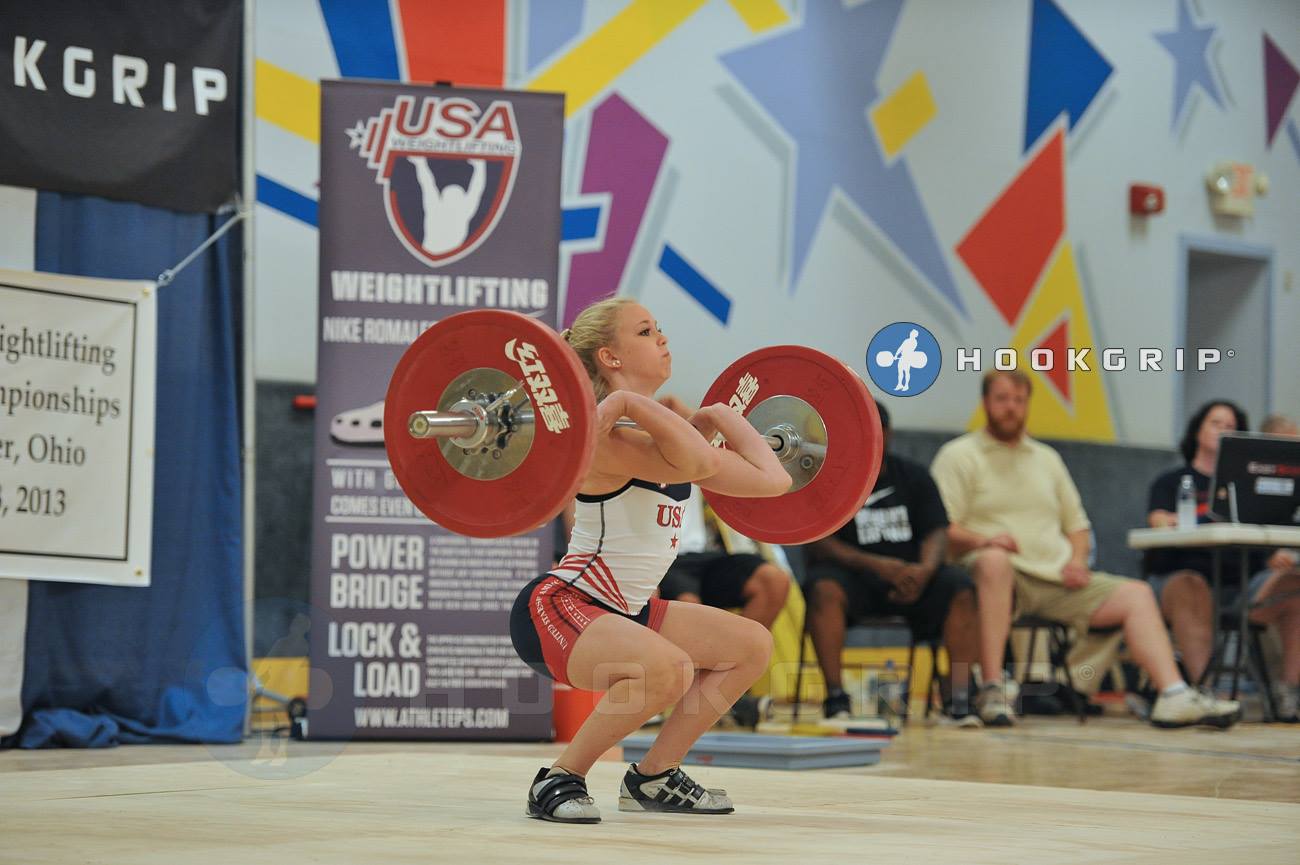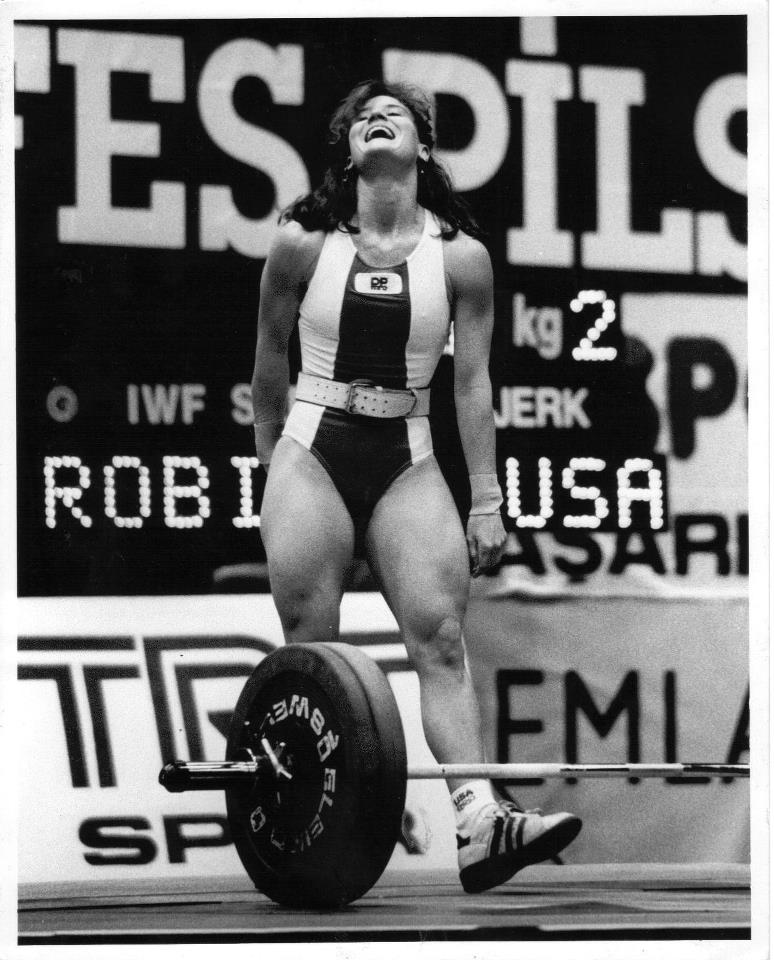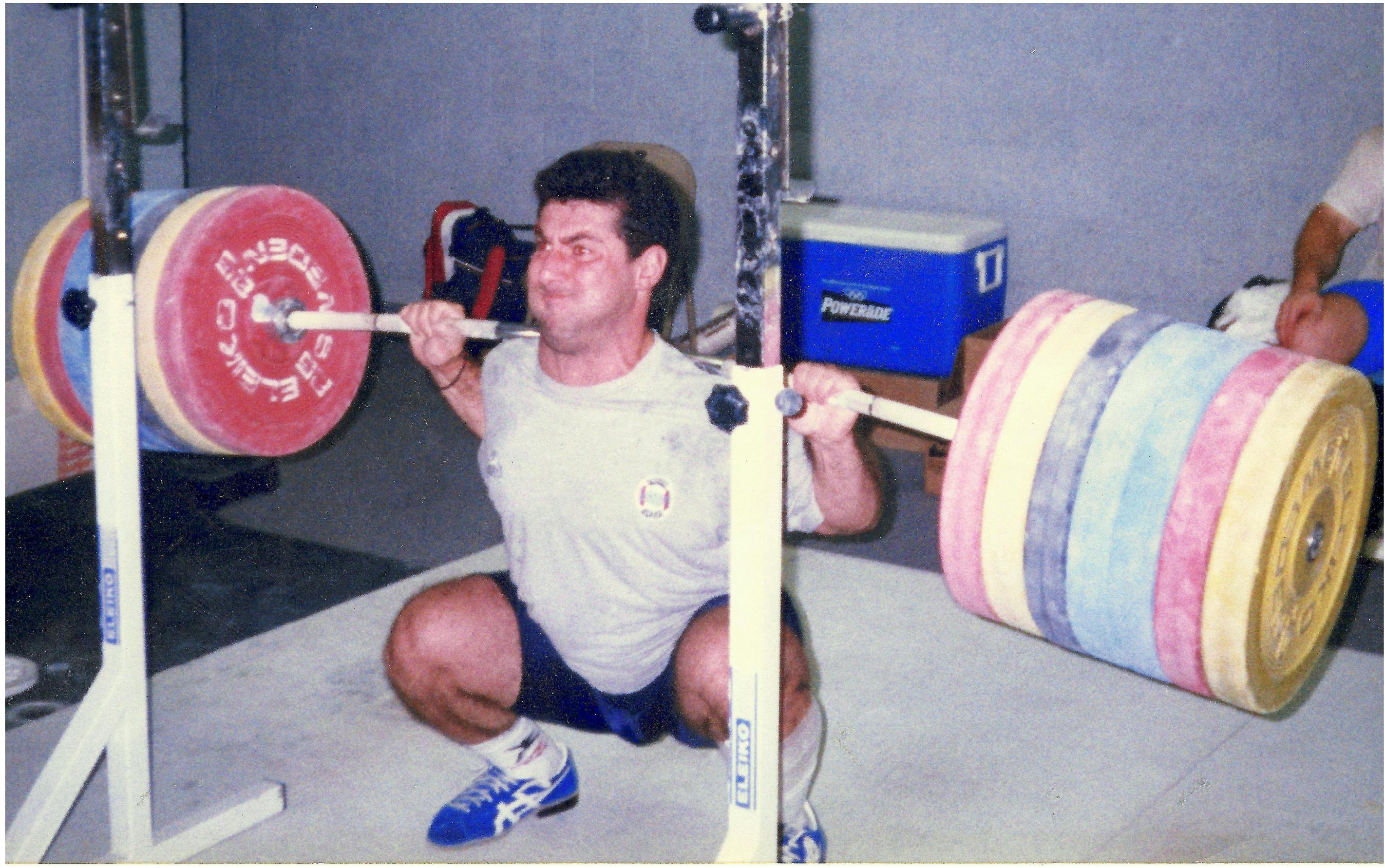
We’re open for business again at the same shopping center! Our new address is 1818 Lower Roswell Rd., three doors to the left of Fitness Depot
Train like hell, you'll get there

We’re open for business again at the same shopping center! Our new address is 1818 Lower Roswell Rd., three doors to the left of Fitness Depot
http://mdjonline.com/bookmark/23292680/article-Marietta%20women%20weightlifters%20win%2019th%20national%20championship
Photo Credit to hookgrip
By Adam Carrington
The women’s weightlifting team at Coffee’s Gym has returned to the habit of winning national titles.
After narrowly missing out on winning last year’s competition, the team was far more successful the last week of July when it traveled to Cincinnati, Ohio to participate in the USA Weightlifting Senior Nationals. Instead of having to sweat out a tight competition, Coffee’s Gym got separation early and was declared the winner after the second day of competition.
Now the women at Coffee’s Gym have 19 national titles since beginning competition in 1983.
“We’ve done a lot of miles on women’s and men’s weightlifting,” said John Coffee, owner and coach of Coffee’s Gym, located on Lower Roswell Road in East Cobb. “We were lucky enough to win it again. Last year, we lost it by one point. We were kind of ready this year.”
Each athlete got three attempts to perform the two Olympic weightlifting moves — the snatch, and the clean and jerk. The snatch is to lift the barbell from the floor to above the head in one singular motion. The clean and jerk has the lifter bringing the barbell from the floor and stopping at the shoulder before finishing the lift.
Points are awarded by based on the combined total of the highest two successful lifts to determine an overall result.
Lifters are allowed to choose to lift either 15 pounds above or below their qualifying weight, according to Edward Baker, a weightlifter and coach at Coffee’s Gym. However, the more weight they can lift, the more points they get.
Having depth on the roster helped Coffee’s Gym pull away so quickly.
Kelly Rexroad Williams took second overall in the 105-pound competition with 152 points, lifting 149 pounds by snatch and 185 on clean and jerk.
Jodie Vaughn placed second in the 114-pound class with 165 – lifting 156 pounds by snatch and 198 on clean-and-jerk – and teammate Breanne Havard was third with 155.
Sydney Goad, 16-year-old the daughter of weightlifter Robin Byrd-Goad who competed in the 2000 Olympics, accumulated 126 points to finished sixth in the 105 class. Goad clean-and-jerked 160 pounds, which is a youth national record for the 16-17 age group in the 105-pound category.
Rachel York was fourth at 152 pounds. Rachel Bommicino was fifth at 145. Whitney Welsh was eighth at 138 and Leanna Lin was 15th at 152.
Coffee’s Gym also trained McEachern High School alumnus and 1996 Olympian Tommy Ingalsbe, two-time Olympian Bryan Jacob and 1888 Olympian Mike Jacques.

– Robin Byrd, America’s last Senior World Champion, trained under John Coffee’s scheme of linear periodization.
Written By: Edward Baker
Lately, I’ve been seeing more and more articles circulating that are encouraging athletes to do more; some in regard to increasing the training load, others to go to heavy singles on the lifts on a regular basis. As a lifter whose modest career was almost ended by training with this mentality, I feel compelled to urge some of you that more isn’t necessarily better. I strongly believe that instead, an optimum load should be sought.
My senior year of high school, my old weightlifting coach started all of his lifters on heavy singles in the lifts multiple times a week, as well as squatting about everyday. After the first week, I was hardly hitting 85% of my best lifts, and my patellar tendonitis had flared up to where bending down to grab the barbell would hurt. No matter how much I warmed up and no matter how many anti-inflammatories I took, the pain wouldn’t go away.
I’ve read justifications for training this way, from general ones like “the Europeans do it”, to descriptive hypotheses suggesting that this way of training caused DNA to encode RNAs differently, and consequently proteins were synthesized in a more optimal form. For the past 3 years I’ve been under the tutelage of John Coffee, who is a proponent of the classic linear periodization scheme, and a believer in building strength and muscle in a ‘preparatory’ phase through the means of more repetitions and assistance exercises. There may be something to be said for training this way in order to properly construct the neurological pathways, so that the kinetic and dynamic parameters of the lifts are correct.
Most American lifters (and/or CrossFitters) don’t have the years of backlog that our weightlifting counterparts around the world do in performing the snatch and clean & jerk, so it might be worth doing so to encourage the right biomechanics of the lifts.I only perform squats once per week (front, back, and squat jerks all in the same day), snatch 4 times a week (only going heavy 1 out of those 4 times) and clean and jerk twice a week (power cleans one day, clean and jerks the other) with pulls at sub-maximum weights and various remedials throughout the week. (This may not be enough for a lot of you, but it leads to my point.) I’ve progressed substantially more with this way of training compared to when I was squatting and performing heavy singles on the lifts about everyday.
I’m not trying to say that my old training approach is wrong, in fact some lifters in this country have great success with this way of training (I believe my friend Ian Wilson trains this way.) It was simply the wrong training approach for me, and it’s the wrong training approach for individuals that don’t have the years of backlog performing the movements. It’s the wrong approach for individuals who are not in an ideal training situation (working a full-time job, not getting enough sleep, being a full-time student, etc.), and it’s the wrong approach for those whose body just doesn’t demonstrate the capability to recover from the stimulus (which can lead to injury). In Arkady Vorobyev’s A Textbook on Weightlifting he writes “It is extremely important to locate for every lifter not the limit volume of load, but the optimum volume, giving the greatest effect in the attainment of sporting results.” Whether you’re an athlete or an aspiring coach, give these sentiments a thought.
Yesterday, Edward Baker hit three successive PRs on the squat jerk with 180, 187.5, and 190 kg. His all time power jerk was 185, so the last jerk exceeded his all time jerk PR by 5 kilos. 190 exceeded his best squat jerk by 15 kilos.
By Edward Baker

There aren’t any videos of our training this weekend because instead, I went up to Nashville to help out my friend, Jordan Pepe at a local competition. I’m not trying to turn this into my personal blog, but I can’t help but want to brag about the performance I saw this weekend.
Jordan went up to this meet with the intent to qualify for this year’s Senior Nationals, and boy did she convincingly do so. She ended up going 6 for 6 and totaling 16 kilos more than she needed to qualify. Each attempt looked routine, each one looking just as easy as the last. The highlight for her was clean and jerking a PR of 96 kg, but it ‘looked like a toy’, as John Coffee would say.
I also had the pleasure of helping out Zan Hamilton and Sara Beth Phillips; this was Zan’s first meet and she did great considering that! No matter how hard the cleans, she jerked everything with ease. If you read this Zan, I would recommend front squatting at least once a week once you finish the squat program you’re on; it’ll help you stand out of those cleans with ease! =D
Of course I have to brag about Sara Beth too; she started off by missing her opening snatch at 70 kg. As most weightlifters will agree, this is probably one of the hardest situations to overcome. She overcame it alright, snatching it on her 2nd and then making a much more convincing snatch on her 3rd at 73 kg. In the clean and jerk, she hit 90 on her opener, then went to 94 on her 2nd attempt, gutting out the clean and then missing the jerk. Most people (including myself) would have contemplated just giving up and giving the bar no more than a tug, but she went back out on her 3rd and again gutted the clean, and nailed the jerk. Having that level of tenacity is a great quality to have, a quality that every coach wishes their athlete has.
I really felt compelled to just brag on each of these girls that I helped out this weekend. They each are more involved in CrossFit, but they each could become great weightlifters if they ever decided to dabble in the sport more one day. I look forward to seeing you all at the Senior Nationals next month!
Juan Sepulveda power snatched 98 kg the day after he turned 61; happy late birthday King!

– 1992, 1996, and 2000 Olympic champion Kakhi Kakhiasvilis performing a squat the way it should be done.
I know that what I am about to write will piss some people off, but I’m an old man, 66, and don’t have anything to lose. I also know that many people will disagree with what I am about to say and it is certainly their right to disagree. What I have to say is only one man’s opinion, but it’s the opinion of a man who’s been around the block a few times with this iron game.
Lately, from several sources, I have noticed that the so called ‘low bar’ squat is being taught as a legitimate way to perform an exercise that many people (myself included) consider to be the best and most productive exercise that can be performed with a barbell. This ‘low bar’ squat style seems to be particularly prevalent in some CrossFit circles. I have also had people show up at my gym performing squats in this style after reading about it in a certain book.
I will start my argument by stating that after well over 50 years as a competitive lifter, coach, and gym owner, I have never seen a top-ranked bodybuilder, Olympic lifter, or serious track or football athlete doing low bar squats.
The squat movement, whether it be high bar full back squats, front squats, half or quarter squats, or Hatfield bar squats, to my mind, should be about developing and strengthening the quadriceps, as well as the glutes. The high bar squat, when done properly, should not involve the hamstrings much at all. These muscles should be developed with straight legged deadlifts and Good Mornings (always with the knees slightly unlocked) as well as the various leg curling and glute ham gastroc movements. The hamstrings are also strongly involved in Olympic lifting movements such as snatches, cleans, and pulls.
I can remember the first powerlifting meet held in Georgia at the old Butler Street YMCA in Atlanta in December 1965. It drew a diverse crew of bodybuilders, Olympic lifters, and men who already considered themselves powerlifters. As one can imagine, all kinds of squat styles were used. A few years later virtually everyone at powerlifting meets were setting up with the bar half way down their deltoids, using a relatively wide foot stance and barely breaking parallel; and this is as it should have been. Squatting in this style allows one to lift the most weight while staying within the parameters of the rules for the squat movement in competition.
In the old days at Coffee’s Gym in the 1980’s, the powerlifters would do high bar squats until about a month out from the competition, at which time they would put on their super suits, widen their foot stance, and set up with the bar half way down their shoulders. Immediately they would squat 100-200 pounds more than they’d been doing on the high bar squat. After the competition they’d go back to their high bar squat routine. Not only did these men become very strong in the squat movement, they also possessed very good quadricep development.
In closing, I would like to say that most trainers should stick to high bar squats, front squats, or squats with the Hatfield bar if it’s strong legs and good quadricep development you seek. If it’s the posterior chain you want to strengthen and develop, stick with Romanian deadlifts, Good Mornings, Olympic lift movements, as well as hyperextensions and various leg curls.
The low bar squat is not an exercise for leg development; it’s a way of doing a strength feat that allows a man or woman to lift the most weight while staying within the rules for the lift, but it’s not a movement that those who wish to develop leg strength for sports or to improve the shape and appearance of their legs has any business doing.
If one wishes to develop real leg strength, every effort should be made to keep the torso upright when squatting. When the torso is inclined forward, much of the effort is transferred to the butt, lower back, and hamstrings. This is not what we want. I would also like to add that all squatting and pulling movements should be performed with the back strongly and rigidly arched. In my opinion the very best test and developer of real leg strength is the full front squat with the back strongly arched. The full high bar squat is not far behind. The low bar back squat is not even on the list.
John B. Coffee
USA Weightlifting Senior International Coach
Edward Baker clean & jerks 165 kg
Leeanna Lim front squats 100 kg for triples
Just recently, a user on Pendlay Forum asked John Coffee a series of questions; we feel the need to share the questions (and John’s answers) on our website as they may serve value to someone.
Coach Coffee,
Just a few questions if you don’t mind:
a) Regarding brand new lifters that want to take up Weightlifting. Do you have any general guidelines to get them started? For example, do you teach them the full lifts right away if they have flexibility? Do you teach the snatch before the cleans? Etc..
JOHN: In general I usually teach the full squat snatch first, starting with overhead squats, drop snatch, shrugs from the hips, snatch from the hips, and then working down to the floor – mid thigh, knees, mid shin, floor. Sometimes I can have someone doing a fairly good squat snatch in 30 minutes, and then again some take much longer. The great ones usually can learn quick. I do the same with the clean & jerk. Of course technique must always be practiced and criticized and often modified.
b) I noticed that when you observe your lifters during each lift, you tilt your head sideways. I’m just wondering, but does this help you observe the bar path better?
JOHN: I do this so that I can get a better idea of what’s happening during the critical stage when the bar should brush (not bang) the hips.
c) What are some Weightlifting books would you recommend to someone who wants to learn more about the sport?
JOHN: I think Artie Dreschler’s Weightlifting Encyclopedia is very good. Both of Tommy Kono’s books are very good as are Carl Miller’s books. Bob Takano’s book, Harvey Newton’s book, Matt Foreman’s book are also good books. One should read a wide variety of weightlifting material from as many different sources as possible. The Russian books that Bud Charniga has translated are well worth a close look. It’s even good to read old stuff from old issues from muscle magazines: Strength & Health, Muscle Builder, and Ironman.
d) About upcoming coaches. What advice would you give them?
JOHN: The most important thing for aspiring coaches to learn is how to teach technique and to always remember that people are different and may need slightly different variations in technique. Some may have hips a little higher at the start of the pull than others, a few people may do better with the split style of snatch or clean. It’s also worthwhile to learn about many styles of training and not to be a slave to just one way of doing things. Different people may have wide variations in recovery ability and need to do more or less volume and intensity. One can never know it all, and one should never stop striving to learn more.
Best wishes, John B. Coffee